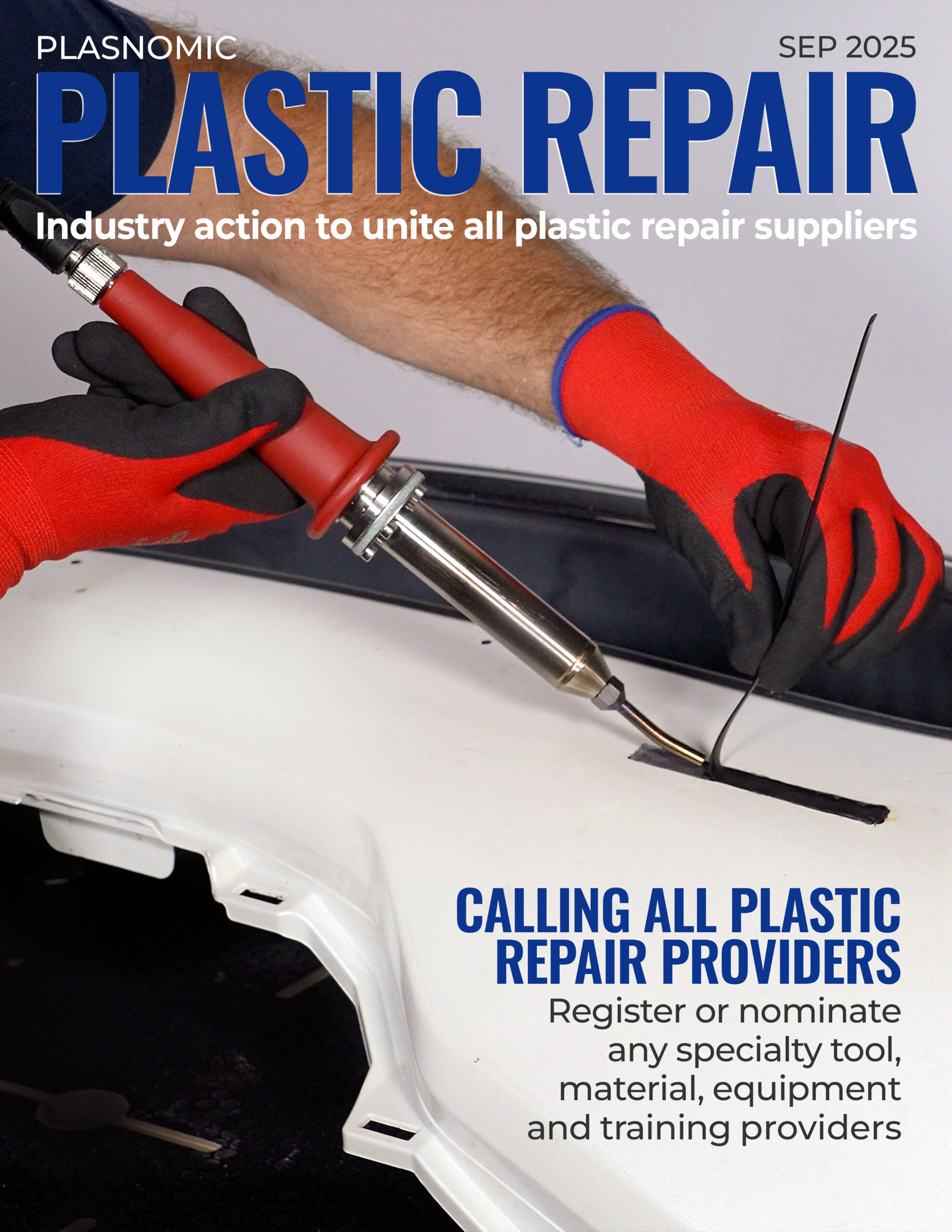
Plasnomic Call to Action: Objective
The plastic repair industry is entering a decisive new era. With advanced vehicle materials, increasingly complex components, and mounting sustainability demands, the industry needs more than isolated solutions. It needs clarity, consistency, and credibility on a global scale.
Plasnomic’s Call to Action is designed to deliver exactly that.
The objective is simple but powerful: to bring every process, tool, material, and product in plastic repair into one transparent, evidence-based framework. By doing so, Plasnomic will create a trusted backbone for shops, MSOs, insurers, OEMs, and suppliers consolidated in one centralised online platform.
This Call to Action invites every supplier, manufacturer, and innovator in the plastic repair space to either register their solutions or be nominated for review. From welders and fillers, to textures, adhesives, tabs, tools, and consumables every solution matters, and every solution deserves a fair, independent evaluation.
The Six Pillars of the Plasnomic Call to Action
1. Source Solutions Through Registration and Nomination
Every plastic repair product, tool, and material in the market will be mapped and documented. This ensures no innovation, no matter how small or specialised, is left behind.
2.Evaluate Through Independent Testing & Validation
Solutions will undergo rigorous lab testing, real-world MSO partner trials, and benchmarking against OEM standards. This process ensures credibility, transparency, and performance validation.
3.Form the Plasnomic Approved & Preferred List
Validated solutions will be published in a global reference database. Products meeting baseline requirements will be classified as Plasnomic Approved, while the highest-rated solutions will earn Plasnomic Preferred status.
- A transparent grading matrix will measure performance, cost, and practicality.
- This empowers shops and decision-makers with clear, evidence-based comparisons.
4.Collaborate with MSOs and Training Partners to Develop Standards
By working alongside leading global MSOs, training bodies, and industry experts, Plasnomic will codify best practices into universal plastic repair standards. These standards will be designed for adoption across all regions.
5.Centralised Knowledge Sharing & Support
For the first time, the industry will have a central online platform dedicated to plastic repair. This portal will include:
- A searchable approved product database
- Training and certification resources
- Knowledge sharing and support services
- A hub for industry discussions and innovation
6.Represent & Promote the Plasnomic Preferred Range
The strongest, most innovative, and highest-performing solutions will be recognised as part of the Plasnomic Preferred Range—becoming the benchmark for best practice globally. These solutions will be promoted and supported through industry channels, driving adoption and trust.
Why This Matters
By aligning under these six pillars, Plasnomic is creating the single source of truth for plastic repair.
- For Shops: Confidence in choosing validated solutions backed by real data.
- For MSOs: Standardisation across networks, improving efficiency and quality.
- For Insurers: Reduced costs and risk, with measurable ESG benefits.
- For OEMs: Assurance that repairs meet safety, performance, and compliance standards.
- For Suppliers: Recognition, credibility, and global exposure for validated products.
This framework also directly supports sustainability. By shifting toward validated repair first strategies, the industry can reduce waste, lower carbon emissions, and extend the lifecycle of parts turning sustainability into both a business and environmental win.
Together, through collaboration and validation, we will build a stronger, smarter, and more sustainable collision repair industry.
The time is now. Join the Call to Action.

